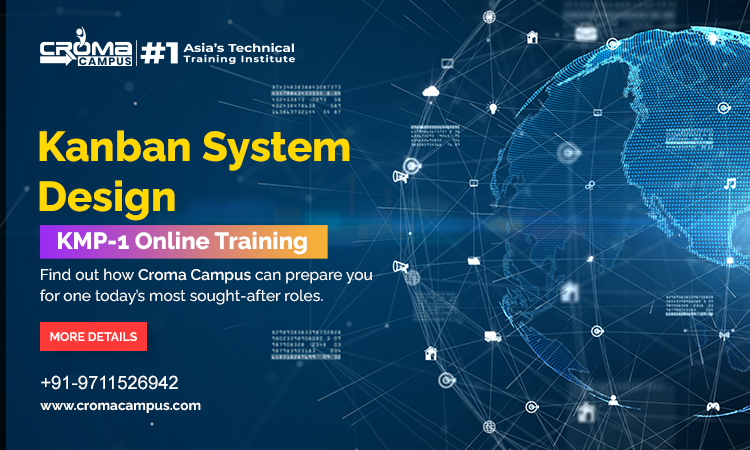Kanban System Design KMP-1 is a popular lean workflow strategy for establishing, managing, and optimizing knowledge work services. It allows the organization to see your job, increase productivity, and improve continually. Kanban boards represent work, allowing you to maximize job delivery across many teams and handle even the most complicated projects in a single environment.
This concept or expression originated in the manufacturing industry, and since then, Agile software development teams have taken over this system. However, it has recently begun to get recognization by business units from various industries. Therefore, Kanban System Design KMP-1 Training Institute in Noida and its nearby locations allow the candidates to learn the basic steps involved in this system.
Kanban System Design: Overview
Since the 1950s, the Japanese term “kanban,” meaning “visual board” or “sign,” has been used to describe a procedure. This system first came into existence by Toyota, which uses it as a scheduling system for just-in-time manufacturing. Moreover, the capitalized phrase “Kanban” is well-known and related to the birth of the “Kanban Method.”
Steps Involved in Kanban System Design KMP-1
Kanban System Design depends on David J. Anderson’s STATIK approach for bringing Kanban into teams and organizations.
Thus, the system comprises the following steps:
● Map your Current Flow
In the first step, identify the stages in your present process while creating a Kanban system. Everyone on your team must participate in this system. In this system, you must discuss as a group how work moves from “To Do” to “Done.”
- What different processes does work go through before its completion?
- Also, Consider where handoffs occur.
- Is your procedure designed with any review cycles?
Try speaking out the answer to the above questions on a whiteboard. Then, discuss how recently completed work items passed through your process and confirm that your map is correct. Moreover, your workflow will change on the basis of the purpose, size, and current processes.
● Visualize the workflow
On a visual control board, either physical or digital, you chart the process you now employ in order to deliver work product to the client.
However, each column represents a phase to add value to a single work. Also, ensure that you plan out every stage of the process, from conception through delivery to the end user.
● Focus on Flow
Flow measures how easily work goes through your system. In this step, work should flow from one phase in your process to the next without interruption or delay. There are times when work stops and begins due to poor flow.
Before implementing Kanban, organizations are not likely to pay attention to how work moved through your process. Now that you are noticing areas for improvements in the system, the team’s responsibility is to identify a few adjustments in your board and make them one at a time. If you modify too many things at once, you won’t be able to observe or measure the impact of your modifications.
● Limit your WIP
Currently, you have created the board, moving work through it, and trying new ideas to optimize your flow. Now, you are ready to implement one of the most crucial Kanban concepts; WIP limitation.
Work-in-Progress management is the systematic activity of regulating how much work is in your system. There are several advantages to restricting your work in progress, including:
- Increased velocity
- Decrease Context switching.
- Improved work quality
- Smoother handoffs and more.
WIP is the number of cards currently active on your Kanban board. However, you can establish WIP limitations at the team or individual levels.
Limiting WIP at the team level can boost your team’s productivity and efficiency. On the other hand, individually limiting WIP can help you stay focused on producing excellent work faster by reducing the distraction of context change.
● Measure & Improve
Now you should focus on growing your Kanban board and your Kanban practice. It is not a one-and-done situation. As of now, your board accurately reflects your approach but doesn’t guarantee it will be similarly relevant three months from now. Thus, it is necessary to be adaptable and open to new ideas so that you may continue to get the most out of your Kanban system Design.
Conclusion
Hopefully, you find this article helpful and informative. We have compiled the easy five steps to implement Kanban System Design KMP-1 in your organization. As a result, Kanban System Design KMP-1 Online Certification provides the applicant with a robust platform to improve the workflow process and tends to increase the performance of an organization.
